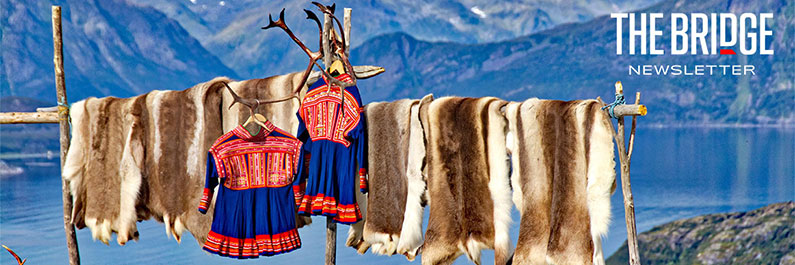A journey into the heart of the north
by Polar Geographer and Fred. Olsen guest speaker Penny Goodman
The Sámi are the indigenous people of Northern Europe. Their rich culture and traditional lifestyles have evolved over thousands of years in response to the harsh coastal and tundra environments of the far north.
There is a stereotypical view that all Sámi were nomadic reindeer herders. While there were and still are Sámi reindeer herders, there are also coastal, mountain and forest Sámi, many of whom have not been nomadic for centuries, engaging in fishing, farming and hunting as part of their livelihoods. What defines and unifies these diverse groups is their language. There are ten Sámi languages and dialects, but the most widely spoken is North Sámi. The vast northern region spanning four countries where the Sámi live is known as Sápmi.
Like many indigenous peoples, the Sámi have faced persecution and pressure to assimilate. This partly stemmed from their traditional beliefs and paganism being seen as witchcraft, which led to trials and burnings. Sámi shamans (naodii) were believed to be great wizards, and their drumming was particularly feared. Only about 40 Sámi drums have survived, as many were destroyed in the 17th and 18th centuries. Their animistic and polytheistic beliefs, closely tied to the natural world, involved magical sites, sacrifices and special hunting rituals.
The Sámi are known for their colourful, distinctive clothing made of wool or cotton, often adorned with ribbons, pewter or silver brooches, and buckle belts, with regional variations in cut, colour and decoration. Both men and women wear a gákti, a tunic with a high collar, while Sámi boots (finnesko) have turned-up fronts to grip skis. Historically, women wore the ládjogahpir, a crown-like headdress that disappeared by the late 19th century, possibly due to religious disapproval or its association with paganism. Men’s 'Four Winds' hats were believed to have supernatural powers. Traditional clothing also features a shawl (lididni) and a bonnet, replacing the more elaborate headdresses.
The Sámi lavvu and goahti are tented structures that were essential forms of housing for nomadic or semi-nomadic groups. Today, these iconic tents are popular with tourists but remain important political symbols. Sámi, whose livelihoods were based on agriculture or fishing, did not live in lavvu but in turf or log houses.
The Sámi have two important musical forms: drumming and joiking. Joik singing gained wider recognition through Disney’s Frozen 2 – a story loosely inspired by the environmental impact of dams like the Alta Dam – and KEiiNO’s Spirit in the Sky, Norway’s 2019 Eurovision entry, which featured joik.
Food is central to Sámi culture. While they imported grain from Russia, most of their diet consisted of reindeer, fish and wild fruits. Traditional dishes include flatbread and various types of reindeer stew, such as Renkok and Bidos. Besides tasting the food, another way to experience the culture is by purchasing traditional crafts, known as duodji, which include carved wood, metalwork and textiles.
Today, the Sámi cultural legacy is thriving. Sámi is now an official language in Norway and schools must include Sámi history in their curriculum. Some schools teach in Sámi, and there are reindeer schools and a Sámi university, marking an exciting time for the Sámi people.








